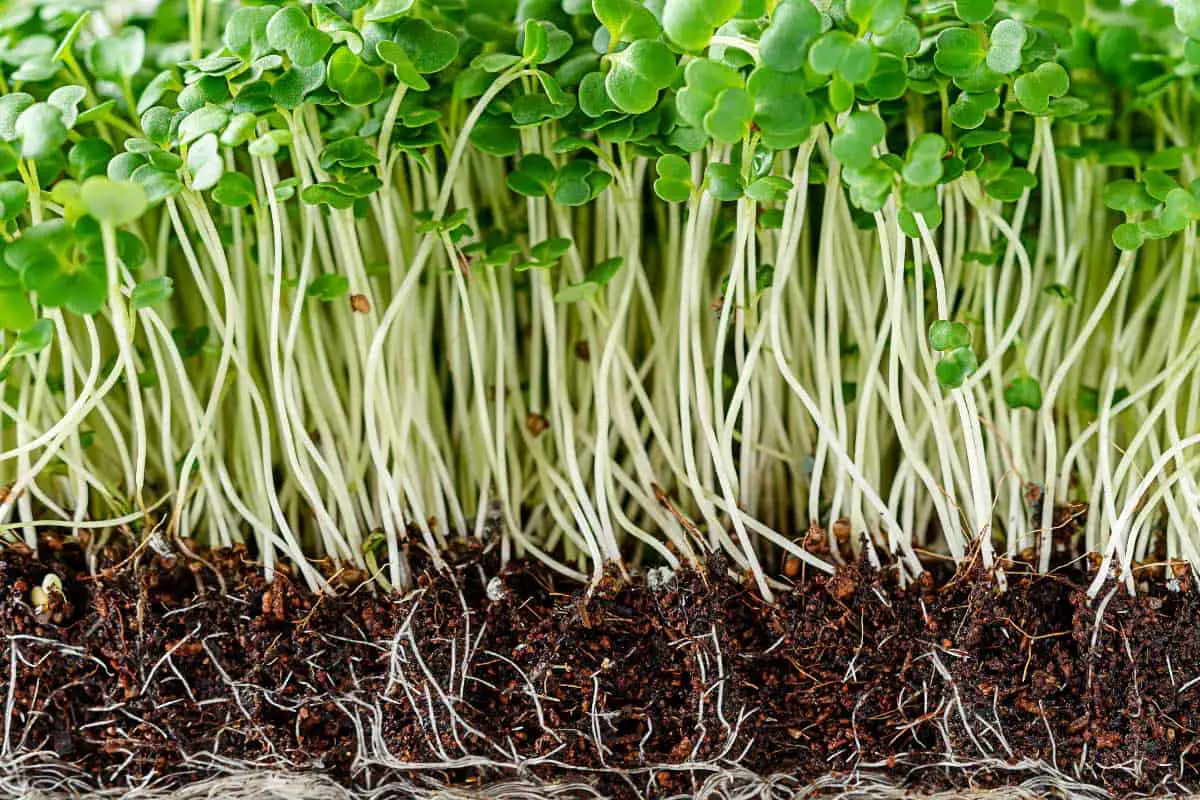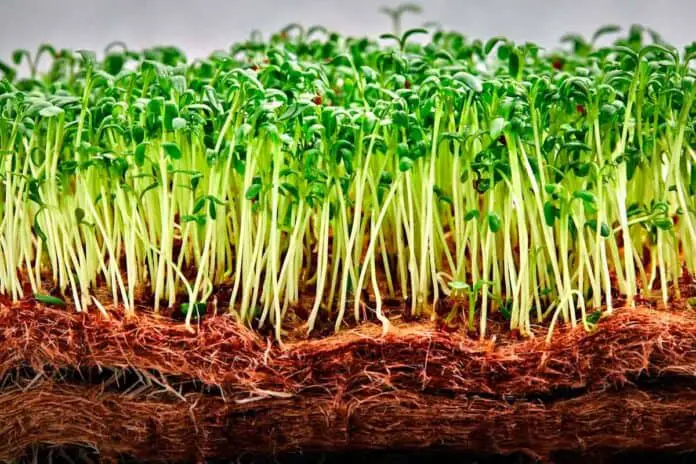Can you eat microgreen roots? This question must have crossed your mind at least once, with you being unsure of just how safe it is to consume your microgreen roots. Well, we have the answer.
Eating microgreen roots is not recommended. Although they are technically edible, only the stems and leaves should be consumed. The roots can be exposed to different bacteria and dirt, and hence can lead to health problems.
Growing and consuming your microgreen is exciting, and it has during the last years, increased in popularity for growing indoors. After all, microgreens are not only quick and easy to grow but are a powerhouse for nutrients and vitamins. If you are new to growing microgreens, you may wonder if you can eat the roots as well.
Before we go deeper into the understanding of why you should not eat the roots of microgreens, let us explain what roots are. As you plant microgreens seeds in soil or soilless medium, they are existent to give life and support to the microgreens. Roots are essentially the way a plant obtains water and nutrition to grow.
As seeds are planted, they start to grow roots, and these are located underground in the soil (or soilless growing medium). The roots help the process of photosynthesis which allows the plant to grow to its full potential. On microgreen roots, there are small hairs that help to absorb water, and it’s channeled through the stems and up to leaves. The hair on microgreens can at times be wrongly mixed up with mold – that is another topic that we have covered in this article about mold and how to prevent it.
Another purpose of the roots is to hold the microgreens tightly in the soil (or soilless growing medium) and to grow upwards.
How Do Microgreen Roots Develop?
Microgreens are a new class of edible vegetables. These small veggies are about 1-2 inches tall and grow tiny roots (compared to their full-grown counterparts). The roots start to grow after you have planted the seeds and started giving them their daily intake of water.
At first, you may see that the roots are visible on top of the soil, but as they grow taller, the roots are being pressed downwards. As the microgreens mature the roots get longer and are usually white and tangly.
Microgreens are considered edible and ready for harvest when roots have developed, stems have reached about two inches, and before true leaves have emerged.

Factors That Prevent The Consumption Of Microgreen Roots
There are different reasons why you should not consume the roots on your microgreens. These reasons include but are not limited to:
Mildew and Mold
Microgreen seeds can be planted in different growing mediums such as soil, coconut coir, hemp, or even in just water (hydroponically). Most of these environments are hospitable to bacteria and germs. They may not be visible to the naked eye, but many microorganisms such as molds and fungus, which are not suited for human consumption, can grow alongside these roots.
Mildew and mold thrive in wet environments that lack a free circulation of air. To grow your microgreens, you must water them regularly and lightly to improve their growth chances. The water goes to the root, is collected, and then stored. Since microgreens get planted with high density, their roots become tangled and woven together. If the growth container or surface doesn’t allow for free air circulation, mildew and mold can set in. If this is not taken care of immediately and effectively, mold and mildew may even spread to the microgreens themselves. This can render your entire growth process useless and non-consumable.
You stand the risk of dealing with microbes when using containers or surfaces without an outlet for excess water to escape. When this happens, the microbe eventually uses up the available oxygen in the soil, thereby causing the roots to rot away. To avoid this issue, you can use the bottom-up watering method.
If you suffer from mildew and mold, you may think that you can salvage some microgreens by pulling them out with the roots instead of shearing them. However, always check your microgreens before harvest, as infected roots could lead to food poisoning or worse.
Medium Type
To grow microgreens, you want to use the best types of medium. The reason is that you want your seeds to grow in a nutritious growing medium. The absence of a good medium can lead to an unhealthy growth process.
Microgreens grown in poor mediums tend to lack vitamins and nutrients and can also be more prone to problems with mildew and mold, as previously explained. Naturally, if you consume unhealthy microgreens or the roots, you may risk contracting health-related issues.
How To Harvest Microgreens For Consumption
To consume healthy microgreens, they are harvested using a cutting method. The difference between harvesting microgreens and many other vegetables is instead of pulling the roots out, you simply cut them just above soil level. You can almost compare it to cutting grass, but with a small scissor or knife instead of a lawnmower!
Harvesting microgreens are the same for all varieties, but the readiness depends on the seed used. Most microgreen types have a turnaround period of 2-3 weeks, after which they are ready to be harvested and consumed. Typically, when they are around two inches, or you can see the first set of leaves sprout, it is ready to be harvested.
To harvest successfully, you use a sharp scissor or knife and cut them just above the soil line, paying attention not to include any root part. Harvesting your microgreen batch is as simple as that.
What To Do With Microgreen Roots
Once you have harvested your microgreens, you will be left with a batch of growing mediums that will not be reusable for replanting. You can make an effort and prepare the soil to be reused, but the work involved will most likely be more tedious than throwing it in the bin. However, there are ways you can still make use of used soil and be less wasteful!
If you enjoy gardening, you can take the soil or other growing medium you have used and throw it in the compost. Repurposing your leftover soil can be nutritious for indoor plants or your outdoor garden.
In this article you can learn more about how you can reuse your soil.
Conclusion
We can conclude that microgreen roots are not suitable for eating and should be removed as you harvest. The edible part of the microgreen includes the stem and leaves, similar to many other vegetables. Mildew and mold are two common problems that microgreen farmers have to deal with, and they are more prone to grow among the roots and just above the soil level. Roots are meant to feed the plant with nutrition to grow, but it is not a palatable part.
As you begin to grow your microgreens, you will soon realize that it can be wasteful to throw away the soil after each batch. The medium is filled with roots, and they are more or less impossible to clear out. For this reason, most growing mediums are not reusable, but there are ways to make the best of use it!
Even though you discard the lower part of the microgreen and all that soil, it doesn’t have to go to waste. Those microgreen roots and the lower stems not consumed can add great organic matter to a compost pile. You can compost these parts in a compost pile or bury them in your home garden.
Continue growing your microgreens, but leave the roots behind as you harvest these tiny superfoods!



